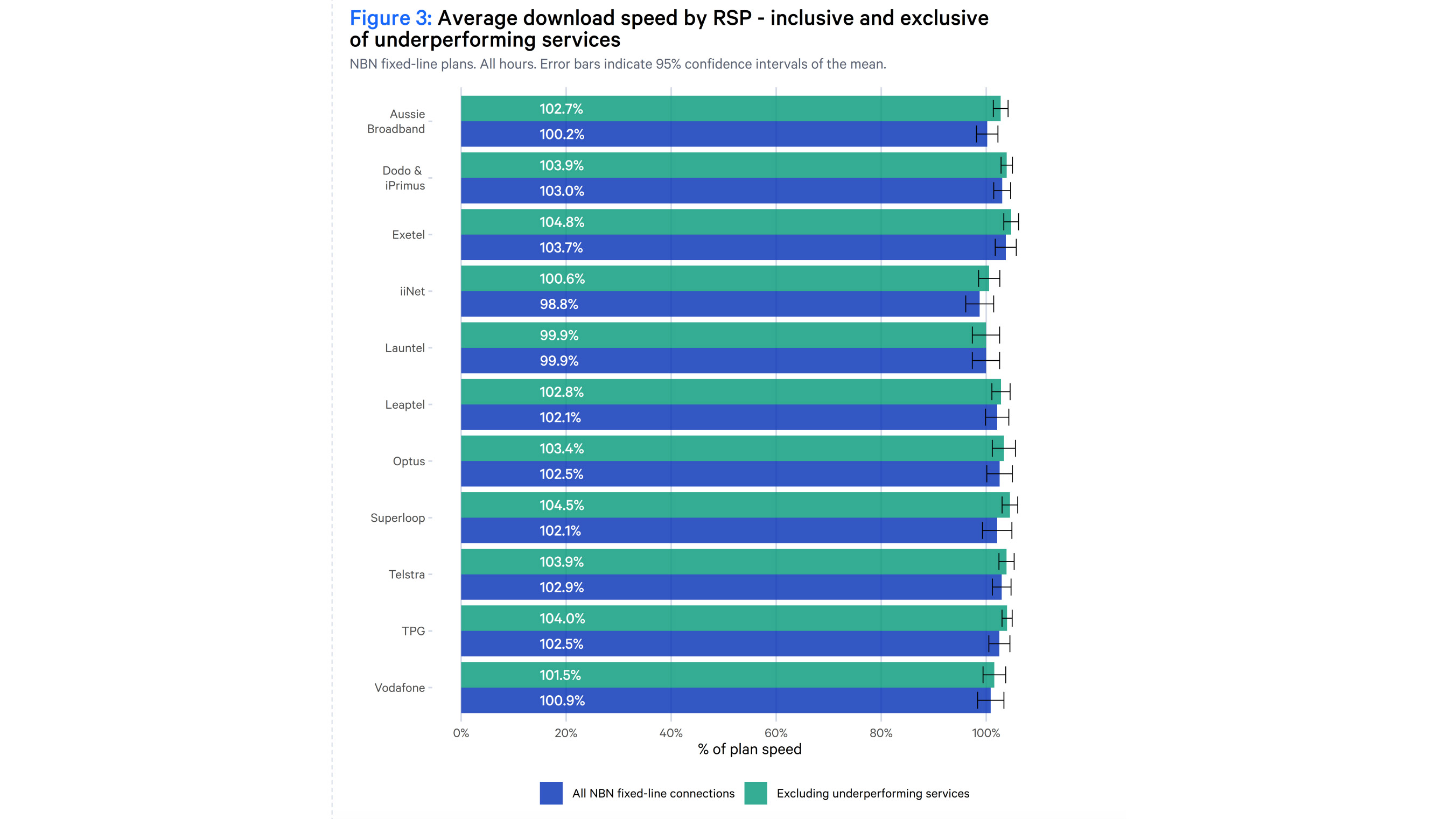Australians are upgrading their NBN not just for speed, but for reliability, latest ACCC report shows
Find out if you can join them with NBN Co’s free fibre upgrade

- FTTN connections significantly underperform compared to FTTP
- Found to be up to 15Mbps slower on average than FTTP connections
- NBN Co’s fibre upgrade program makes it easy to witch
Australia’s consumer watchdog, the Australian Competition and Consumer Commission (ACCC) has released its latest Measuring Broadband Performance report which provides a general overview of the current state of the National Broadband Network (NBN).
As has been the case with previous reports (released every quarter) one of the key takeaways from this latest release is that users who connect via a fibre to the node (FTTN) connection type are more likely to experience what is known as an underperforming service, compared to those on fibre to the premises (FTTP) connection types. FTTP connections are capable of supporting the best NBN 1000 plans with gigabit download speeds.
The findings highlight the attractiveness of NBN Co’s free fibre upgrade program, which is currently available for approximately 80% of the fixed-line network around the country. NBN Co recently said 90% of the fixed-line network – around 10 million homes – will be able to access gigabit speeds by December 2025.
Numbers don't lie

Overall, all 11 internet service providers (ISPs) monitored in the ACCC’s report achieved close to, or exceeded, 100% of advertised plan speeds across all hours of the day, including busier evening hours of 7pm to 11pm. However, when underperforming services are separated, it doesn’t make for quite as impressive reading.
The ACCC’s report says “underperforming services represented 3.0% of the 1181 NBN services tested.” While this might not seem like a high figure, the report also found that “FTTN services made up 89% of underperforming NBN services, and NBN 50 and NBN 100 plans accounted for 94% of the underperforming services.”
In fact, it was also found that customers connected via FTTN on an NBN 50 plan achieved an average download speed 5Mbps slower than other technologies. The average download speed of NBN 100 plans was around 15Mbps slower than other technologies.
What does this mean?
In the grand scheme of things, a 5Mbps to 15Mbps difference likely won’t make a huge amount of difference in the real world. But if someone is paying for a service, they should reasonably expect to receive the speeds they’re paying for.
Get daily insight, inspiration and deals in your inbox
Sign up for breaking news, reviews, opinion, top tech deals, and more.
It’s not an ISP’s fault that a customer may not achieve maximum plan speeds because of their equipment. FTTN connections employ fibre cabling from an exchange to a cabinet (node) likely somewhere on a street and copper cabling from the node to a premises. It’s this copper cabling that is the likely culprit for the slower speeds.
In contrast, FTTP connections utilise fibre cabling throughout the entire process. It’s capable of supporting gigabit speeds – and up to 2Gbps speeds by this time next year – and is less susceptible to damage or interference.
The ACCC added “The number of fibre-to-the-node connections included in the Measuring Broadband Australia program has declined over time due to many volunteers upgrading their connection to fibre-to-the-premises.” Although it did also stress that even with upgraded equipment, consumers need to ensure their in-home equipment – a modem and/or router – is up to the task of supporting faster speeds.
Next steps
The ACCC’s report makes it clear that FTTN connection types are inferior to FTTP. Fortunately, NBN Co’s free fibre upgrade program makes it easy to have the superior technology installed. The vast majority of NBN providers support the program and make it easy to switch. All you need to do is sign up for one of the fastest NBN plans and your ISP will take care of the rest.
You can view some of the most popular high-speed NBN plans in the widget below.
You might also like...
- Superloop has dropped unrivalled Black Friday NBN deals – including NBN 1000 for just AU$89p/m – but act fact to snap them up!
- New report reveals Australia’s most reliable NBN providers – is yours on the list?
- Switching NBN providers to save money? Don't make this one mistake that could eat up all your savings

Max is a senior staff writer for TechRadar who covers home entertainment and audio first, NBN second and virtually anything else that falls under the consumer electronics umbrella third. He's also a bit of an ecommerce fiend, particularly when it comes to finding the latest coupon codes for a variety of publication. He has written for TechRadar's sister publication What Hi-Fi? as well as Pocket-lint, and he's also a regular contributor to Australian Hi-Fi and Audio Esoterica. Max also dabbled in the men's lifestyle publication space, but is now firmly rooted in his first passion of technology.